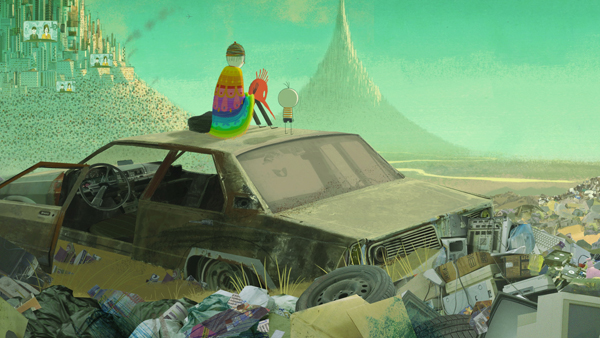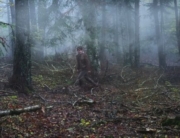There’s no intelligible dialogue in this animated odyssey about a nameless boy who leaves his home in the countryside in search of his father, but it still manages to speak to the heart. The father has left for the city to find work, and his lonely son undertakes a dreamlike pursuit. Growing in sinister stature along the way are some shadowy figures who act as enemies to the people and to music, which director Alê Abreu links together to represent and celebrate what is best in this world.
At first the story seems to fit the archetype of the hero’s journey. The boy crosses the threshold into the wider world, has new experiences, and prepares to return home enlightened. While the story is similarly circular in nature, it more accurately has the kaleidoscope as its model. Beginning and ending chase each other here, looping around in a way that brings less wisdom than a continuous cycle of change.
Boy and the World confounds the expectations of traditional coming-of-age narratives, creating something much more ambiguous than a typical family film. Abreu’s inventiveness in this regard may relate to his Brazilian heritage. In accepting the Nobel Prize for Literature, Gabriel Garcia Marquez outlined the need for magical realism in Latin America. It is a region, he said, that has faced so many coups and wars, that has created so many corpses and refugees, that endures so many daily miracles and tragedies that the “crucial problem” of its artists “has been a lack of conventional means to render [their] lives believable.”
Abreu temporarily abandons his enigmatic tone near the end of the film, with a live-action montage that displays deforestation and other industrial hazards. Some may find this too jarringly didactic, but death is actually present in the story from the start. The train station where the father departs from looks like a gallows, and all the adults have a skeletal quality. There is never a glimpse of a future for the boy that seems deserving of his innocence, so the real world simply tears its way into the childlike animation.
The hand-drawn animation is unique and gorgeous, varied yet cohesive, the product of a singular vision. Abreu brings beauty to his urban settings without romanticizing them and finds ways for his main character to continually charm the audience: a scene where the boy bounces around on floating musical notes is a standout. Somehow, after the film’s descent into 21st-century horrors, Abreu finds an ending which is both melancholic and satisfying. Instead of spoon feeding a lesson, Boy and the World opens the door to curiosity and conversation.

















Leave A Comment